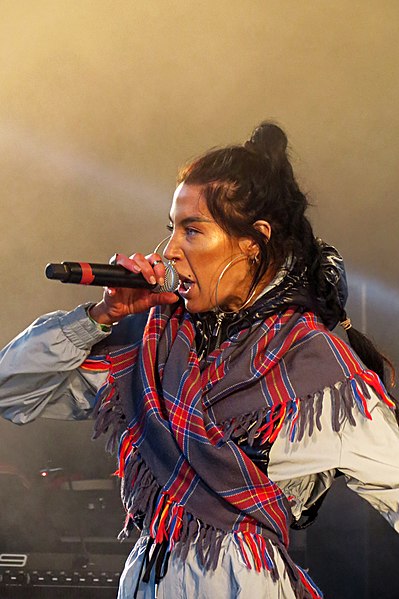The Kashmir shawl, the predecessor of the contemporary cashmere shawl, is a type of shawl identified by its distinctive Kashmiri weave and for being made of fine shahtoosh or pashmina wool. Contemporary variants include the pashmina and shahtoosh shawls. In the late 20th century, they evolved to middle-class popularity through generic cashmere products, and raffal, shawls woven in the Kashmiri style, but using thicker Merino wool. Originally designed as a covering for men in India, it has evolved in the popular cultures of India, Europe, and the United States as indicators of nobility and rank, heirlooms giving on a girl's coming-of-age and marriage, and subsequently, as artistic elements in interior design.
Kashmir shawl
Pashmina goats in Ladakh
A 19th-century Kani shawl
The buta design on an 18th-century Kashmiri shawl
A shawl is a simple item of clothing, loosely worn over the shoulders, upper body and arms, and sometimes also over the head. It is usually a rectangular piece of cloth, but can also be square or triangular in shape. Other shapes include oblong shawls. It is associated with the inhabitants of the northern Indian subcontinent—particularly Kashmir and Punjab—and Central Asia, but can be found in many other parts of the world.
A Persian bride with an engagement shawl
Maxida Märak wearing a traditional Saami wool shawl onstage at Riddu Riđđu 2019
Brooklyn Museum - Doña Josefa de la Cotera y Calvo de la Puerta - Mexican overall
Ethiopian model and filmmaker Amleset Muchie wearing a traditional shawl.








